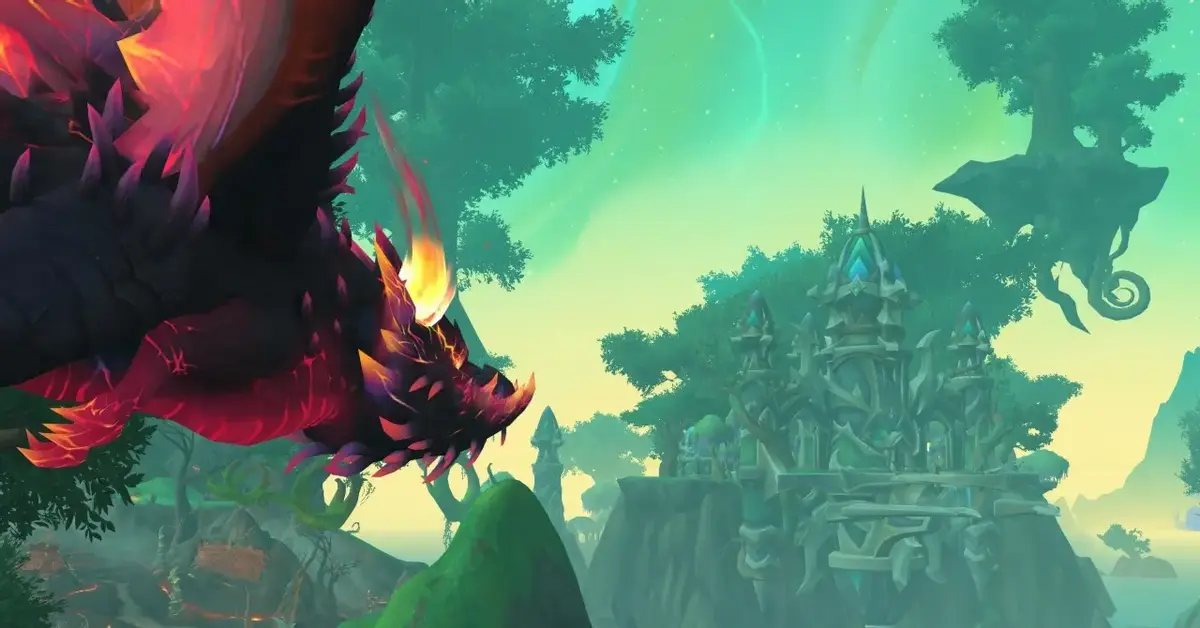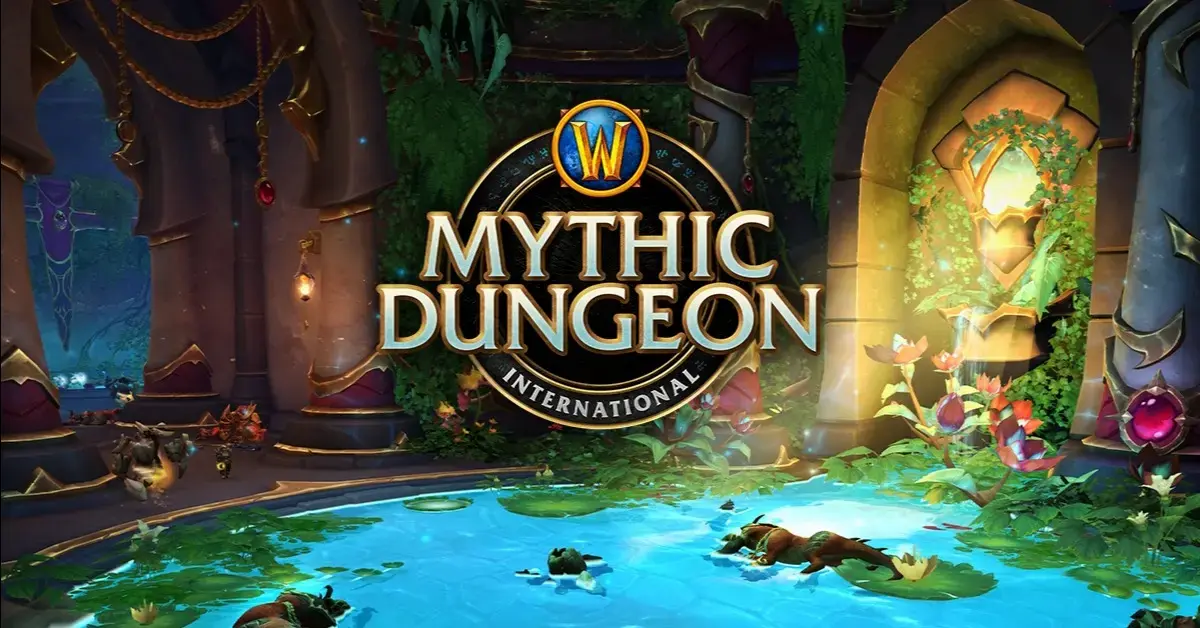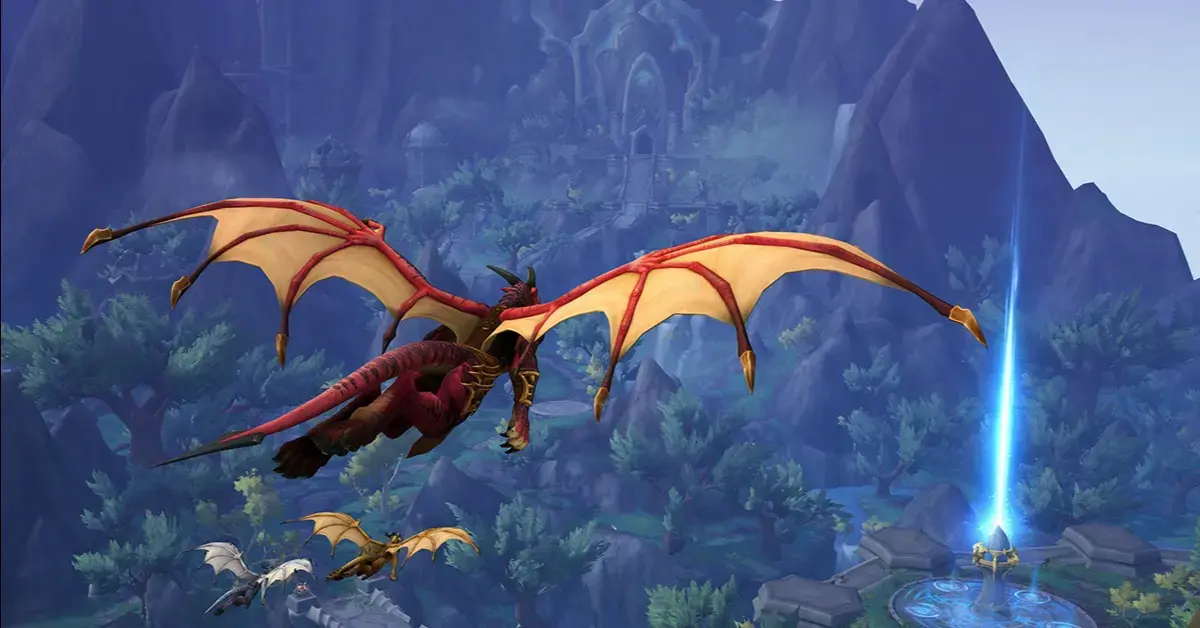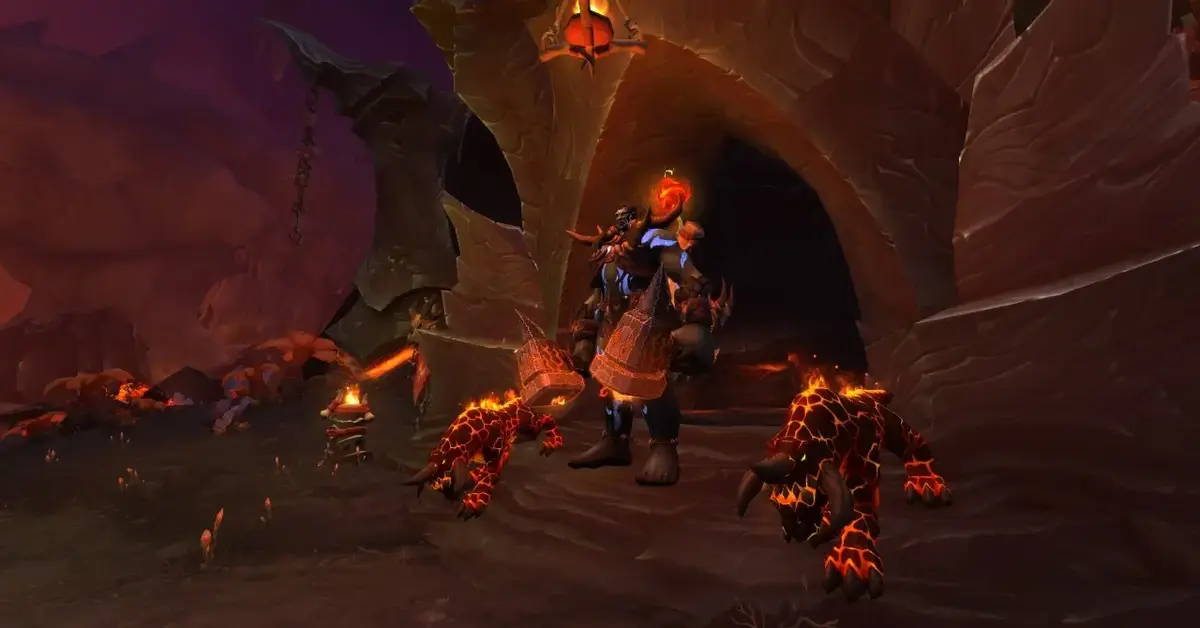WoW TBC Classic Mining guide
WoW TBC Classic Mining guide
Good day to you Adventurer! We would like to sincerely welcome you to this guide in our series of The Burning Crusade guides. This one is in many ways similar to the Classic guide, that we have published before, however, it also talks about the changes introduced in TBC, as well as presents the necessary information to quickly get started in the new expansion.
First of all for those of you who are still considering the proper choice of professions for your character, we would like to give you an overview of what this profession is mainly about. Mining, as you probably imagine is a gathering profession centered around obtaining various minerals and gems found all around Azeroth.
What is more, this profession also allows for initial processing of the obtained ores via Smelting. The bars of metals created through the process are then used by various artisans, mainly, Blacksmiths, Jewelcrafters, and Engineers. Due to the fact that the materials obtained are used as primary reagents by three professions, you can expect the demand for them to be anything but low.
For that reason, this profession is mainly chosen by those who also choose one of the three aforementioned professions, since they all require huge amounts of these materials for essentially all of their recipes. Although, as we have also mentioned in our herbalism guide, it is possible to go for double-gathering profession set, if you are not aiming at doing any crafting in particular and only wish to find an additional source of profit. However, there are certain issues with using this method in TBC.
The biggest drawback is to this method is that you cannot use both finding skills, Find Minerals and Find Herbs, at the same time. That issue leaves the players who decide on the double-gathering strategy to cycle both detection skills endlessly to find everything in their path, thus making it a rather tedious task.
Other than that, you also lose the individual benefits provided by each profession, such as, for example, the possibility of crafting powerful soulbound items or performing special upgrades on your gear. Because of that fact we recommend in our WoW TBC Classic Mining guide that you carefully consider this strategy should you wish to pick it.
Furthermore, similarly as with all other professions just about anyone can learn mining, however there are of course some who will benefit more from having this as one of their professions. The best classes would be warriors and paladins, since they would usually also take blacksmithing as their crafting profession since these are the classes that use plate armor and heavy weapons produced by these professions. Nonetheless, as mentioned before, you can and should, if that is your wish, choose any profession you like, regardless of class.
In the same way as with crafting professions, when you look at different nodes, you can see different color, from orange through yellow and green to gray, which differ in respect to how likely you are to get a new skill point when performing a given action. The first one means you are guaranteed to get a skill point, while with the following colors the chance becomes lesser and lesser, finally, grey does not give you a skill point. As such for the purposes of this WoW TBC Classic Mining guide you should avoid doing anything which displays in green anymore, in fact, you should only pursue orange and yellow activities, since these are going to make your experience with Mining a smooth and quick one.
Similarly, to all other professions, even the gathering professions faced some changes in the new stage of the game other than the introduction of new ores and gems.
First of all, now apart from the usual mineral yield that you normally get from mining a node, you will also occasionally get Mote of Fire or Mote of Earth when mining, as well as Eternium Ore, a somewhat rare drop from mining, used in some of the higher-end recipes.
Other than that, mining, much alike Herbalism got a new bag with 28 slots, which is curiously made by Leatherworkers, called the Reinforced Mining Bag. The recipe for this one is, however, reputation-gated and requires either Revered reputation with Kurenai or The Mag-har.
Moving on the most important point, that is new minerals and gems, as well as how to acquire them, and where best to look for them if you wish to find them. New nodes found in Outland are:
- Fel Iron Deposit, which is going to provide you with 2-4 Fel Iron Ore, sometimes between 1-2 Mote of Earth or Mote of Fire, and occasionally it can also give 1 Eternium Ore, Golden Draenite, Blood Garnet, Flame Spessarite, Deep Peridot, Shadow Draenite or Azure Moonstone. These deposits can be found anywhere in Outland, since every single zone is going to spawn some of them.
- Adamatite Deposit, which yields between 2-4 Adamantite Ore, sometimes 1-6 Mote of Earth or 1 Eternium Ore; rarely it can also drop between 1-2 Golden Draenite, Blood Garnet, Flame Spessarite, Deep Peridot, Shadow Draenite or Azure Moonstone. This node is also found everywhere in Outland, with the exception of Hellfire Peninsula.
- Rich Adamantite Deposit, which can give the player between 5-7 Adamantite Ore, with a good chance for anywhere between 3-8 Mote of Earth and 1-3 Eternium Ore. Although seldom, it can also yield 1-2 Golden Draenite, Blood Garnet, Flame Spessarite, Deep Peridot, Shadow Draenite or Azure Moonstone. This node is, similarly to its normal version, found everywhere in Outland, with the exception of Hellfire Peninsula.
- Khorium Vein, which always gives between 2-4 Khorium Ore, sometimes with the addition of between 1-4 Mote of Earth and 1-3 Eternium Ore. On rare occasions it can also drop 1-2 Golden Draenite, Blood Garnet, Flame Spessarite, Deep Peridot, Shadow Draenite or Azure Moonstone. This node is all zones in Outland.
Surprisingly, there are more smelting recipes than there are ores that can be mined, due to the fact that different alloys are also introduced in this expansion, which are similar to those known from Classic, the TBC smelting recipes are:
- Fel Iron Bar, which needs 2 Fel Iron Ore
- Adamantite Bar, which requires 2 Adamantite Ore
- Eternium Bar, which costs 2 Eternium Ore
- Felsteel Bar, requiring a total of 3 Fel Iron Bar and 2 Eternium Bar
- Hardened Adamantite Bar, which needs 10 Adamantite Bar
- Khorium Bar, which requires 2 Khorium Ore
WoW TBC Classic Mining leveling guide
In this part, we are going to guide you through the locations, nodes and methods of acquiring them. However, do note a few things before you begin.
First of all, you should know how and where to look for ore nodes. All miners receive an ability called Find Minerals at level 1; it is a toggled skill that makes mineral nodes appear on your minimap. Remember that this must be activated, moreover, it has to be reactivated if you die, since it disables on death. Moreover, minerals, in general, can be found mostly near hills, cliffs, mountains, zone borders, and caves or mines, where you would, generally speaking, expect them to be in the natural environment. Hence, it is generally advisable, as you will see below in the WoW classic Mining guide to circle around most zones if you want to optimize your path, rather than scan the whole area.
Do also note one important difference between Retail and World of Warcraft Classic. In the latter, which is the main concern of this guide, mineral nodes are essentially single-use-only, which means that if you or someone else gather a certain node, then no one else can until they respawn. Due to that you might have problems sometimes finding minerals in popular areas during peak hours, simply since there are many other players farming the limited resources. Due to that, you should be polite and perhaps not blatantly steal resources from under other player’s noses when they are busy fighting some monsters for the node.
Other than that, before we move on to actual mining, it is important to learn a few other things. First of all, when you are smelting ores, you also gain skill points, however, that only happens up to a certain degree and is not a reliable leveling method on its own. Secondly, do not forget that in order to mine any node you are going to need a Mining Pick, that can be obtained from any Trade Goods or Supplies vendor in Azeroth. Remember that the pick has to be in your inventory at all times, if you are planning any mining activities.
Starting off with the actual WOW TBC Classic Mining guide, these generally follow the rules on mineral nodes which we have mentioned before. Moreover, you should remember that this guide is not optimized in any way for any profession connected to mining and while it recommends the way to work on your profession of choice as quickly as possible, it does not mean that it will be an optimal sequence for getting reagents for any profession connected with minerals or gems in any particular way.
In here, unlike in Classic, you can’t be particularly picky about the zones you choose to gather minerals in, since there aren’t that many choices for particular nodes, as such the competition may be fierce, especially if the Burning Crusade has just launched. Moreover, on the last note, this guide is mainly for those who wish to level-up their mining skills sometime after the release or those who have just switched to mining. Those who have been miners, should have no problem gaining the necessary skill-points during the leveling and questing. For those who wish to start from scratch on the other hand, before you continue with this guide, you ought to first have a look at our WoW Classic Mining Guide.
First of all, to gain your first 30 skill points and get to 330 skill-level, you will mainly be mining Fel Iron Ore. Assuming the Dark Portal as your starting point, you will want to head north-west around the edge of the map, from where you will want to start your counterclockwise loop. You should continue going that way, until you reach Void Ridge, from where you should keep going around the mountains down to Spinebreaker Post and to the Expedition Armory. Then, you ought to follow the broken walls that lead to Hellfire Citadel, where you will want to continue going north around Thrallmar.
It shouldn’t take you long to move on to the next part you should head to Zangarmarsh and keep going around the mountainous borders of the zone. The main objects of interest for you will be Fel Iron Ore and Adamantite Ore. Here you want to keep on your route until you reach level 350. There are no areas to avoid here or complicated paths like in Hellfire Peninsula, so just stick to the Edge and you will be fine.
You can also do the aforementioned part of your leveling process in Terokkar Forest, wheras you want to just keep going in circles around the mountainous edges of the central part of the map, while avoiding the areas above Shattrath City and Skettis in the south-east corner.
For the last 25 skill-ups you ought to head either to Nagrand, Netherstrom or the Shadowmoon Valley. You might as well decide to stay in Zangarmarsh or Terokkar Forest, especially if you are a lower-level player without a flying mount.
All of the aforementioned zones are quite simple to navigate, for the most part you just ought to go in circles around the edges of the map. In Nagrand, you also want to explore the caves you will see, since they hold many deposits, as well as the central area of the map. In Netherstrom, you also want to patrol the edges of the isles, while also exploring the caves, do avoid walking in the areas of the Tempest Keep and Stromspire, since there are no nodes in the vicinity. As for the Shadowmoon Valley, you should avoid going into caves, since they take too much time for the number of nodes within them. Do also avoid the surroundings of the Black Temple and Shadowmoon Village.
If you have followed all the above-mentioned steps, you should be now a proud master Miner, capable of gathering just about any minerals in existence at the moment. Congratulations on completing out WoW TBC Classic Mining guide and have fun with your newly acquired profession.
Mining Trainer
One of the important things to remember when it comes to professions is that they also have certain ranks, these are: Apprentice, Journeyman, Expert, and Artisan, and now the new Outland Mining rank – Master, which is going to require visiting special trainers to obtain. This will be especially important if you want to follow our WoW TBC Classic Mining guide since during the leveling of the profession you do need to upgrade these ranks in order to be able to gain more skill as well as learn new recipes.
The new trainers added in the Burning Crusade are:
- Dulvi, who can be seen on Azuremyst Isle, at 48.8, 51.0
- Muaat, who can be found in Exodar, at 60.6, 88.0
- Belil, located in Silvermoon City at 79.6, 42.8
Moreover, to learn Master Mining between level 300-375, you will need to visit one of those new trainers:
- Hurnak Grimmord, in Honor Hold, Hellfire Peninsula, who is the Outland Mining trainer for the Alliance.
- Krugosh, in Thrallmar, Hellfire Peninsula, who helps the Horde players learn their mining skills.
We would like to thank you for taking time and interest in our ultimate guide to WoW TBC Classic Mining and we wish you great adventures in which we hope your newly acquired profession will be of help to you. Good luck and have fun!



